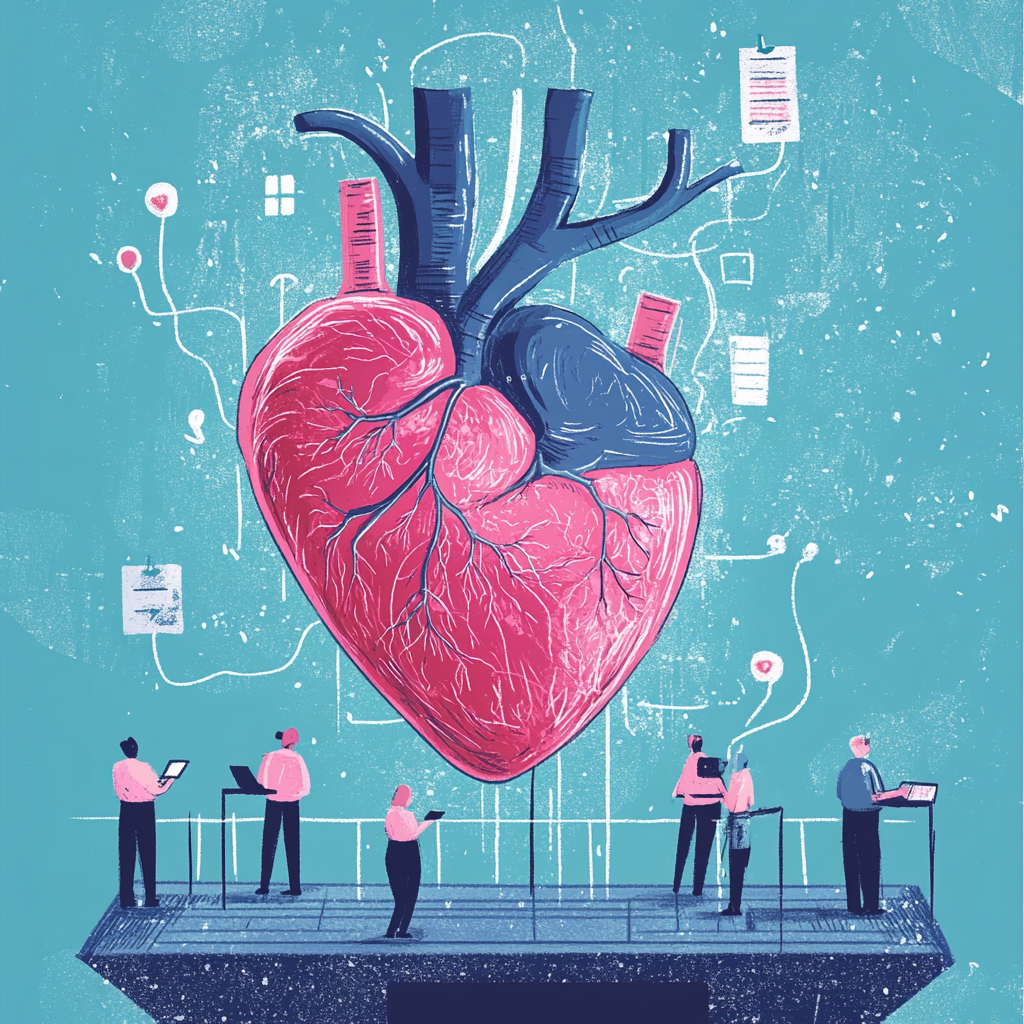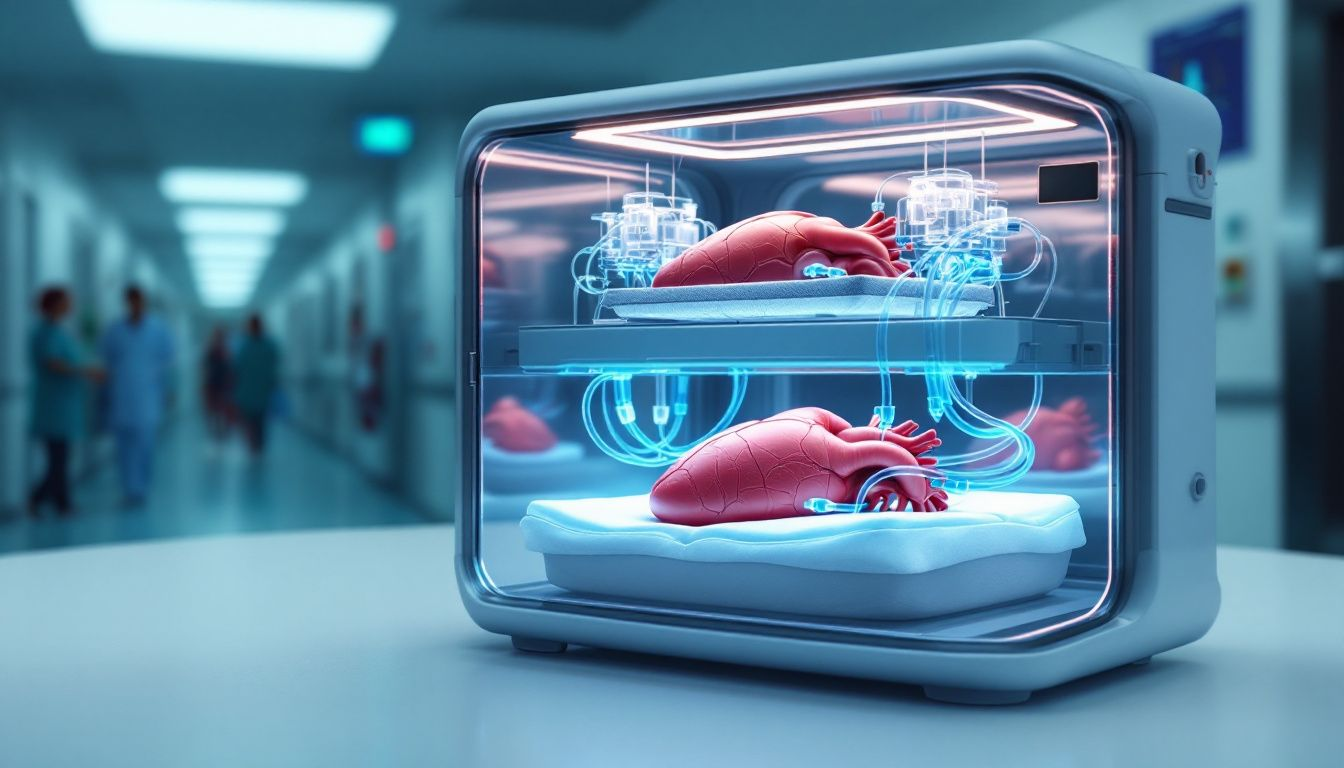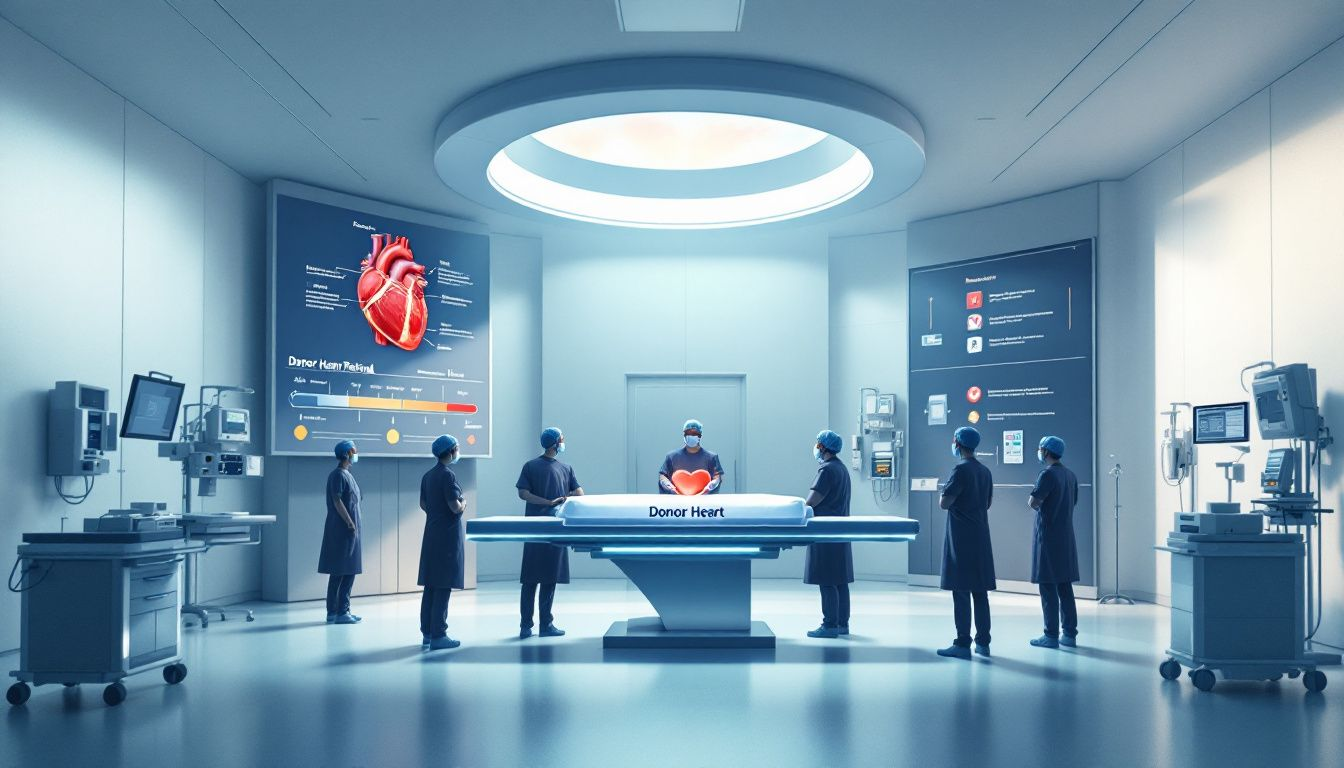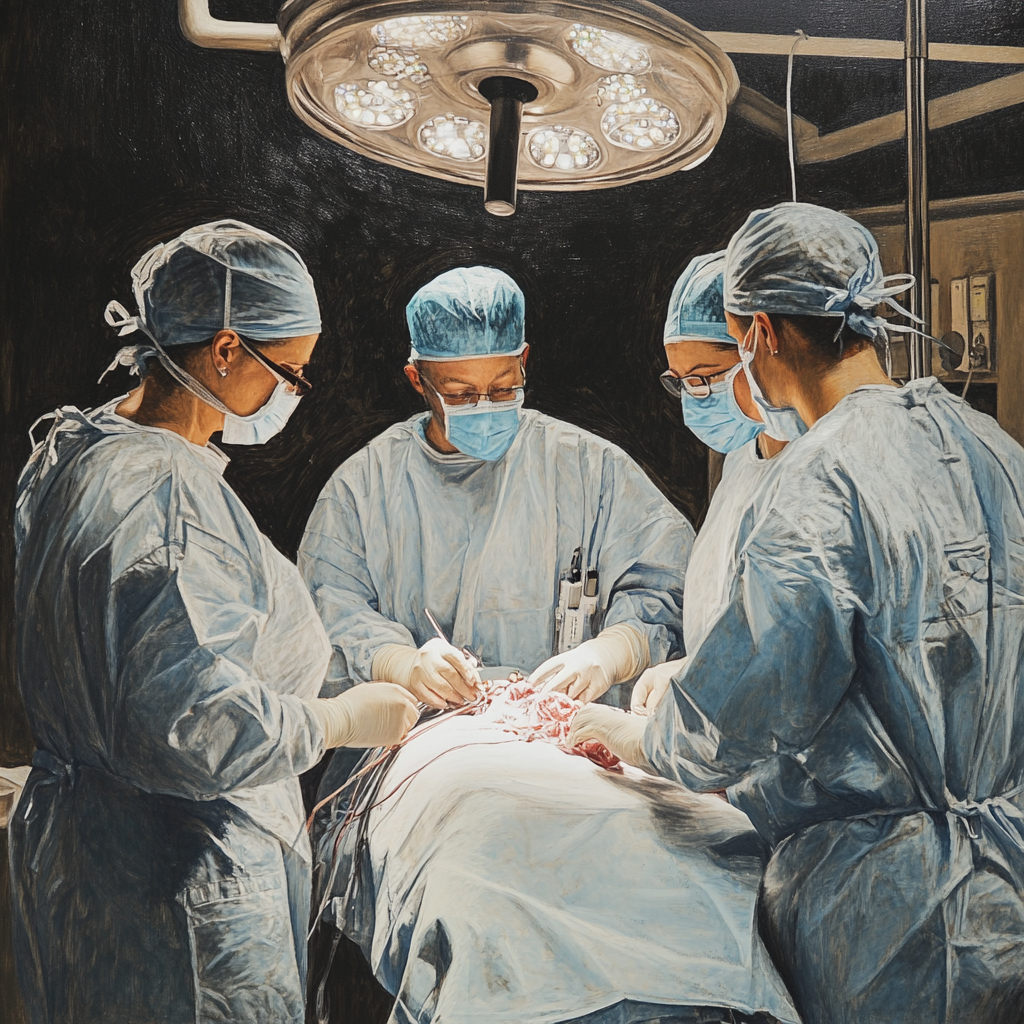The Journey of Life: How Heart Transplants Are Transported
From the moment a heart donor is identified, a race against time begins to transport the heart to the recipient. How heart transplants are transported involves a highly coordinated effort between multiple medical teams and the use of sophisticated preservation techniques. This crucial journey, which must maintain the heart’s viability, includes alerting transplant centers, retrieving the heart, and using advanced transport methods to ensure it reaches the recipient in optimal condition. This article breaks down each stage of this life-saving process.
Key Takeaways
The heart transplant process begins with the prompt notification of a suitable donor heart, involving meticulous matching based on medical compatibility and urgency.
Maintaining the donor heart’s viability during transport is critical, with advancements like the Organ Care System enabling transport in a warm, functional state for better outcomes.
Post-transplant care is essential for long-term success, emphasizing balanced nutrition, regular exercise, and ongoing medical check-ups to monitor health and manage medications.
Notification of a Donor Heart

The journey begins with the notification of a donor heart. When a donor heart becomes available, transplant centers are promptly alerted through the United Network for Organ Sharing (UNOS). This system ensures that no time is wasted, as every minute counts in the delicate process of heart transplantation.
The matching process is a meticulous one, involving the assessment of medical factors such as blood type, tissue compatibility, and the urgency of the recipient’s condition. Geographic proximity also plays a crucial role to reduce the time the heart spends outside the body. This ensures that the donor heart reaches the recipient in the best possible condition, maximizing the chances of a successful transplant.
Upon identifying a potential match, the transplant team prepares for the monumental task ahead. The notification is not just a call to action; it is a beacon of hope for the transplant recipient and their loved ones, signaling the beginning of a new chapter in their lives.
Preparing for Retrieval
Upon confirming a match, the transplant team must swiftly coordinate with the donor hospital to facilitate the retrieval of the donor heart. This requires organizing surgical team members and equipment swiftly for the retrieval. The clock is ticking, and every second is critical.
The donor team assesses the donor heart’s health to verify its suitability for transplant. This involves a thorough examination to confirm that the heart is in optimal condition and free from any damage or disease. Only then can the team proceed with the retrieval, confident that the heart will serve its new recipient well.
The retrieval process itself must occur within a very tight window of time—ideally within four hours—to ensure the organ remains viable for transplant. This time constraint underscores the urgency and precision required in this life-saving endeavor, where every minute can make a difference between life and death.
Transporting the Donor Heart

The next leg of the journey involves the actual transportation of the donor heart. Preserving the donor heart’s viability during transport is vital. Traditional methods involve cooling the heart, but modern advancements have introduced the Organ Care System (OCS), which preserves the heart at a normal body temperature, improving its viability compared to cooling methods.
Innovative techniques like normothermic perfusion have been developed to enhance donor heart preservation. These methods aim to maintain the metabolic functions of the heart, counteracting rapid tissue damage post-explantation and reducing the risk of myocardial edema, a significant challenge during heart transport. The aim is to keep the heart in a state as close to its natural condition as possible during transport.
The heart can be transported using emergency vehicles or flights, depending on the distance from the donor hospital to the transplant center, highlighting the critical role of organ transport in this process. Logistical coordination ensures the heart reaches its destination swiftly and safely. The advent of the ‘heart in a box’ system, where the heart continues to function outside the body, has revolutionized the way organs are transported, allowing for greater distances and extended preservation times.
Maintaining Heart Viability During Transport
Maintaining the viability of the donor heart during transport is paramount. The transmedics organ care system is designed to keep donor hearts healthier for longer periods, significantly improving outcomes. This system allows the heart to function outside the body, maintaining a warm environment and continuous blood and oxygen supply while addressing ethical considerations in organ transport such as fairness and transparency.
The ‘heart in a box’ system is a groundbreaking innovation that allows the beating heart of the donor heart to continue beating and be nourished with oxygen rich blood during transport. This not only extends the time available for assessing donor heart suitability but also allows transportation over longer distances, continuously monitoring heart function throughout the journey.
Advanced preservation techniques, grounded in the science behind organ preservation, help the transplant team keep the heart in optimal condition until it reaches the transplant center. This is a crucial step in the journey, as it bridges the gap between the donor and the recipient, ensuring that the heart is ready to give the gift of life.
Did you know that you can get from Manhattan to JFK in under 5 minutes without driving?
Blade offers seamless helicopter transfers from our West 30th Street Lounge in Manhattan to JFK Airport in just 5 minutes from $195 per seat.
Skip the traffic and ditch the stress with Blade's year-round airport service.

Arrival at the Transplant Center

Arriving at the transplant center doesn’t mark the end of the journey. The surgical team conducts a thorough inspection of the donor heart to confirm its suitability for transplantation. This final check ensures that the heart is in perfect condition and ready to be implanted into the recipient.
Upon arrival, final evaluations of both the donor heart and recipient are conducted. This includes a medical history review and physical examination of the recipient to confirm their readiness for the procedure. The transplant team must verify that the donor heart matches the recipient before proceeding with the implantation.
Essential evaluations and preparations for both the donor heart and recipient set the stage for the life-saving surgery.
Performing the Heart Transplant Surgery

The heart transplant surgery is the culmination of this incredible journey. The heart transplant recipient undergoes health assessments, including a medical history review and blood tests, before surgery. The transplant team verifies the recipient’s optimal health, checking for any active illnesses that could complicate the procedure. Heart transplants require careful planning and coordination to ensure the best outcomes for patients, especially in cases involving organ transplants.
Before surgery, the recipient provides informed consent, understanding the transplant’s risks and benefits. During surgery, a heart-lung machine maintains blood flow as the diseased heart is removed and replaced with the donor heart.
The surgeon meticulously connects the arteries and veins of the donor heart to those of the recipient, a delicate procedure that requires precision and expertise. Once the donor heart is implanted, it usually starts beating as soon as blood flow is re-established, although an electric shock may be administered to initiate the heartbeat if necessary. The donor heart is placed in the same location as the recipient’s original heart, ready to sustain life.
Post-Transplant Care
The journey doesn’t end with the surgery; post-transplant care is critical for ensuring long-term success. The use of oxygenated solutions during heart preservation can prevent cellular damage and improve short-term recovery post-transplant. Balanced nutrition and regular exercise are vital for recovery after a heart transplant.
Post-transplant, a low-sugar diet helps manage blood sugar levels and prevent diabetes. Physical activity is encouraged to prevent blood clots and promote fitness. Managing weight is important due to potential weight gain from medications and improved appetite.
Regular check-ups with the medical team help monitor health and manage medications for transplant patients.
Did you know that you can get from Manhattan to JFK in under 5 minutes without driving?
Blade offers seamless helicopter transfers from our West 30th Street Lounge in Manhattan to JFK Airport in just 5 minutes from $195 per seat.
Skip the traffic and ditch the stress with Blade's year-round airport service.

Bottom Line: How Heart Transplants Are Transported
The journey of a donor heart is a testament to the wonders of modern medicine and the dedication of countless professionals. From the moment a donor heart is identified to the post-transplant care that follows, every step is meticulously planned and executed to ensure the best possible outcomes for recipients.
This journey underscores the importance of organ donation and the life-saving impact it can have. By understanding the process, we can appreciate the incredible effort and coordination involved in heart transplants. This knowledge not only highlights the value of organ sharing but also inspires us to support and advocate for organ donation, giving more hearts a chance to beat anew.
FAQs about How Heart Transplants Are Transported
How are transplant centers notified of a donor heart?
Transplant centers are notified of a donor heart through the United Network for Organ Sharing (UNOS). This system ensures timely communication regarding available organs for transplant.
What is the Organ Care System (OCS)?
The Organ Care System (OCS) is an innovative technology that preserves donor hearts during transport by keeping them at normal body temperature and continuously supplying blood and oxygen, which helps maintain their health for successful transplantation.
How is a donor heart transported?
A donor heart is typically transported via emergency vehicles or aircraft, depending on the distance to ensure timely delivery to the transplant center. This method is crucial for preserving the heart's viability for transplantation.
What happens during heart transplant surgery?
During heart transplant surgery, the recipient is connected to a heart-lung machine while the diseased heart is removed and the donor heart is implanted. The surgeon then connects the arteries and veins, and typically, the new heart begins to beat once blood flow is restored.
What are the post-transplant care requirements?
Post-transplant care requirements include maintaining a healthy lifestyle, managing blood sugar levels, engaging in regular physical activity, and attending routine check-ups with your medical team to ensure optimal recovery and health.
Disclaimer:
Please be aware that the content on this page has been generated by using artificial intelligence language models and may contain errors, inconsistencies, or outdated information. It is provided as-is without any warranties or guarantees of accuracy. We strongly recommend using this content as a starting point for further research. We disclaim any liability for damages or losses resulting from the use or reliance on this content.